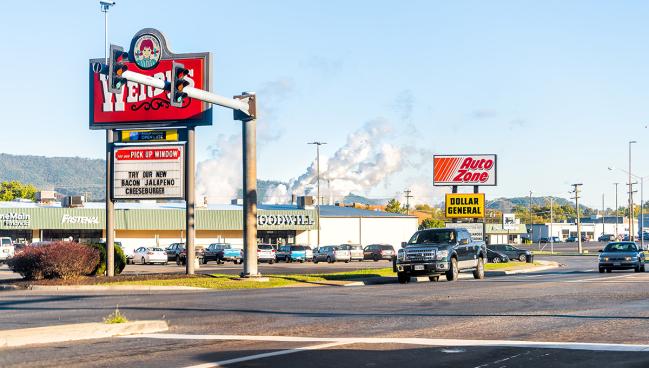Need a Cardiologist? Nearly Half of All US Counties Have None
Cardiologist-less counties had a 31% higher CV risk index, greater prevalence of all risk factors, and more age-adjusted CV death.

Of the more than 3,100 counties in the United States, nearly half have no practicing cardiologists, a new analysis indicates. For the 22 million people who live in these area, researchers found, this lack of access portends worse CV health overall.
Compared with counties that have cardiologists, the 46.3% that don’t are more likely to be rural, have smaller population sizes, lower household incomes, and a higher percentage of uninsured individuals. These counties also have higher burdens of CV disease, higher burdens of all CV risk factors from obesity to high BP, and a higher age-adjusted CV mortality rate, according to the research letter published July 8, 2024, in the Journal of the American College of Cardiology.
Senior study author Haider J. Warraich, MD (Brigham and Women’s Hospital, Boston, MA), worked in a rural county early in his career as the only cardiologist available for about 150,000 residents. He told TCTMD it shouldn’t come as a surprise that areas with fewer cardiologists also have worse outcomes.
“The fact of the matter is that this is a crisis that didn't start yesterday. This has been ongoing for a long time,” he said. “We're seeing that translate into lower life expectancy, greater cardiovascular mortality, and all the things that we would hope with all the advances we've seen in science and technology that we wouldn't be seeing anymore.”
Instead, the urban/rural divide in lifespan and preventable deaths is actually widening at a startling rate, Warraich added.
“This is getting worse by the day. My hope is that this work gives people a sense of urgency that I really just don't see right now when I look around,” he noted.
No Cardiologists in More than 85% of Rural Counties
Led by Jeong Hwan Kim, MD (Brigham and Women’s Hospital), the study, done in partnership with online pharmacy GoodRx, involved an analysis of data from all 3,143 US counties. Among the 1,689 counties with cardiologists, the average number per county was 24. However, approximately 10% of counties with a cardiologist only had one who was practicing.
Looking at rural counties, 86.2% of those had no cardiologists. The average round-trip driving distance to a cardiologist in counties with none was 87.1 miles, versus 16.3 miles for counties with a cardiologist.
By race and ethnicity, non-Hispanic American Indian/Alaskan Native people were the most likely to live in areas with no cardiologists within the county. Last year GoodRx released its own report showing more than 2 million Black Americans live in counties without a single practicing cardiologist.
The researchers created a composite CV risk index for each county that took into account five risk factors: diabetes, obesity, smoking, hypertension, and hypercholesterolemia. For each risk factor, counties were assigned a score of 0 if their risk factor prevalence was no higher than the national average or 1 if it was higher than the national average. Counties without cardiologists had an average CV risk index of 2.8, while those with cardiologists had an average score of 2.1, representing a 31% higher overall risk. Individually, all five risk factors were more prevalent in counties without versus with cardiologists.
The fact of the matter is that this is a crisis that didn't start yesterday. This has been ongoing for a long time. Haider J. Warraich
Kim et al also calculated a food environment index, which estimated access to healthy food in each county on a score of 0 to 10, with higher numbers indicating better access. Counties with cardiologists had an average score of 7.6, compared with just 7.2 for counties with none.
The number of primary care physicians also was lower in counties with no cardiologists, averaging 40.8 per 100,000 residents versus 63.2 in counties with cardiologists. Similarly, preventable hospital stays also were higher when no cardiologists were within a county, averaging 3,090 per 100,000 Medicare enrollees compared with 2,917. Finally, the age-adjusted cardiovascular mortality rate per 100,000 adults was higher in counties with no cardiologists, at 281.56 compared with 269 for counties with cardiologists.
Technology’s Potential to Bridge the Gap
In a press release, JACC’s new editor-in-chief, Harlan M. Krumholz, MD (Yale School of Medicine, New Haven, CT), says the findings highlight “the urgent need for policy reforms and innovative solutions, such as financial incentives for clinicians and the expanded use of telemedicine, to bridge this gap.”
To TCTMD, Warraich said that while technological solutions, including video consults and mobile health apps, make the most sense—and have a proven track record after being employed on a large-scale basis during the height of the COVID-19 pandemic—these have begun to recede due in part to the belief that in-person visits are best for patients and physicians.
What’s needed, he added, are improvements in virtual tools that better approximate the face-to-face experience and make physicians more confident about making medical decisions in those environments.
“I think that there's a real opportunity there, especially as gaps in broadband coverage have been reduced and more people across the country have access to broadband than ever before,” he said. “But ways to use it to make telemedicine equivalent to, if not better than, in-person visits really needs to be a priority.”
Support is needed too, for those cardiologists who are working alone and juggling large patient loads. Many of them are international medical graduates fulfilling visa requirements by working in areas of physician shortages, Warraich said.
Artificial intelligence holds the potential to help in some of those situations by processing information and using care algorithms to offload some of the work and allow for more time devoted to patient care, but a significant amount of additional research and large-scale proof of efficacy of these technologies is still a ways off, he added.
“I do hope that work such as ours and others that highlights the stark disparity in access to care that exists in our country will spur people to take bold steps [and] take big swings, because I don't think that incremental change at this point, after years of this crisis brewing, is going to have a sizable impact on the experience that patients have in these areas,” Warraich concluded.
L.A. McKeown is a Senior Medical Journalist for TCTMD, the Section Editor of CV Team Forum, and Senior Medical…
Read Full BioSources
Kim JH, Cisneros T, Nguyen A, et al. Geographic disparities in access to cardiologists in the United States. J Am Coll Cardiol. 2024;84:315-316.
Disclosures
- Kim and Warraich report no relevant conflicts of interest.





Comments